NR4A transcription factors limit CAR T cell function in solid tumours
- PMID: 30814732
- PMCID: PMC6546093
- DOI: 10.1038/s41586-019-0985-x
NR4A transcription factors limit CAR T cell function in solid tumours
Abstract
T cells expressing chimeric antigen receptors (CAR T cells) targeting human CD19 (hCD19) have shown clinical efficacy against B cell malignancies1,2. CAR T cells have been less effective against solid tumours3-5, in part because they enter a hyporesponsive ('exhausted' or 'dysfunctional') state6-9 triggered by chronic antigen stimulation and characterized by upregulation of inhibitory receptors and loss of effector function. To investigate the function of CAR T cells in solid tumours, we transferred hCD19-reactive CAR T cells into hCD19+ tumour-bearing mice. CD8+CAR+ tumour-infiltrating lymphocytes and CD8+ endogenous tumour-infiltrating lymphocytes expressing the inhibitory receptors PD-1 and TIM3 exhibited similar profiles of gene expression and chromatin accessibility, associated with secondary activation of nuclear receptor transcription factors NR4A1 (also known as NUR77), NR4A2 (NURR1) and NR4A3 (NOR1) by the initiating transcription factor NFAT (nuclear factor of activated T cells)10-12. CD8+ T cells from humans with cancer or chronic viral infections13-15 expressed high levels of NR4A transcription factors and displayed enrichment of NR4A-binding motifs in accessible chromatin regions. CAR T cells lacking all three NR4A transcription factors (Nr4a triple knockout) promoted tumour regression and prolonged the survival of tumour-bearing mice. Nr4a triple knockout CAR tumour-infiltrating lymphocytes displayed phenotypes and gene expression profiles characteristic of CD8+ effector T cells, and chromatin regions uniquely accessible in Nr4a triple knockout CAR tumour-infiltrating lymphocytes compared to wild type were enriched for binding motifs for NF-κB and AP-1, transcription factors involved in activation of T cells. We identify NR4A transcription factors as having an important role in the cell-intrinsic program of T cell hyporesponsiveness and point to NR4A inhibition as a promising strategy for cancer immunotherapy.
Conflict of interest statement
The authors declare no competing financial or non-financial interests.
Figures

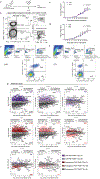



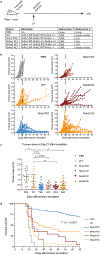

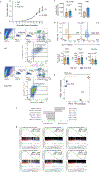
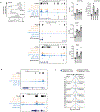



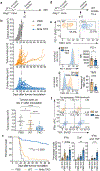

Comment in
-
What's driving T cell dysfunction?Nat Rev Cancer. 2019 May;19(5):251. doi: 10.1038/s41568-019-0138-4. Nat Rev Cancer. 2019. PMID: 30936467 No abstract available.
-
Targeting NR4As, a new strategy to fine-tune CAR-T cells against solid tumors.Signal Transduct Target Ther. 2019 Mar 29;4:7. doi: 10.1038/s41392-019-0041-1. eCollection 2019. Signal Transduct Target Ther. 2019. PMID: 30937188 Free PMC article. No abstract available.
References
Methods References
Publication types
MeSH terms
Substances
Grants and funding
LinkOut - more resources
Full Text Sources
Other Literature Sources
Medical
Molecular Biology Databases
Research Materials

